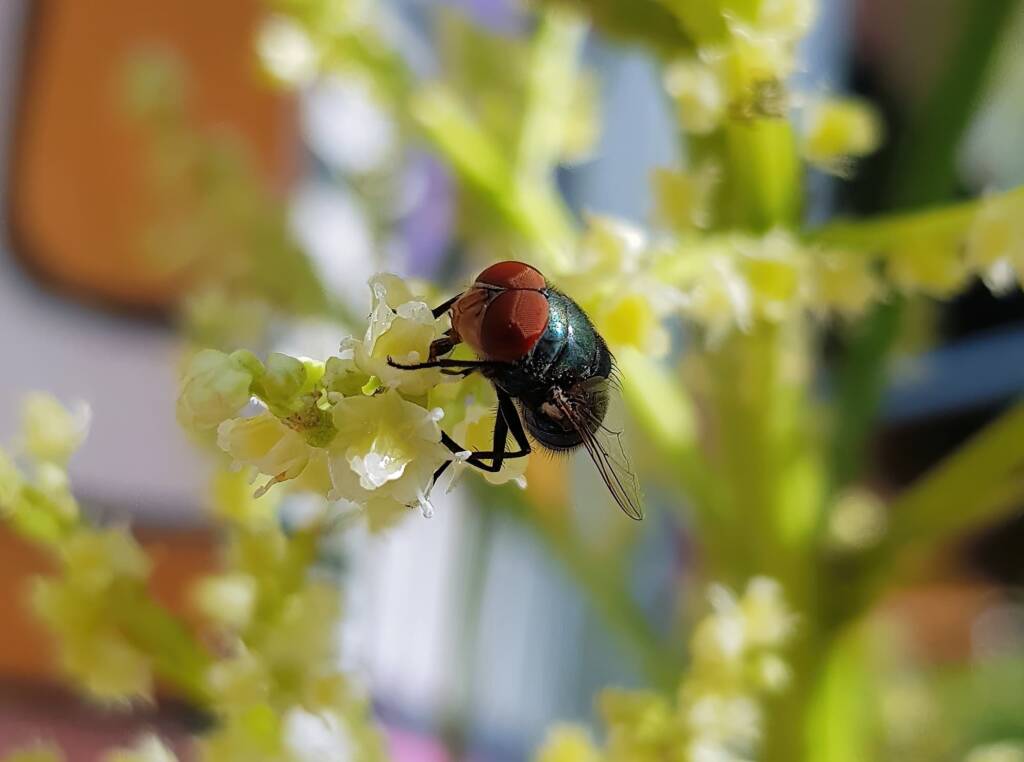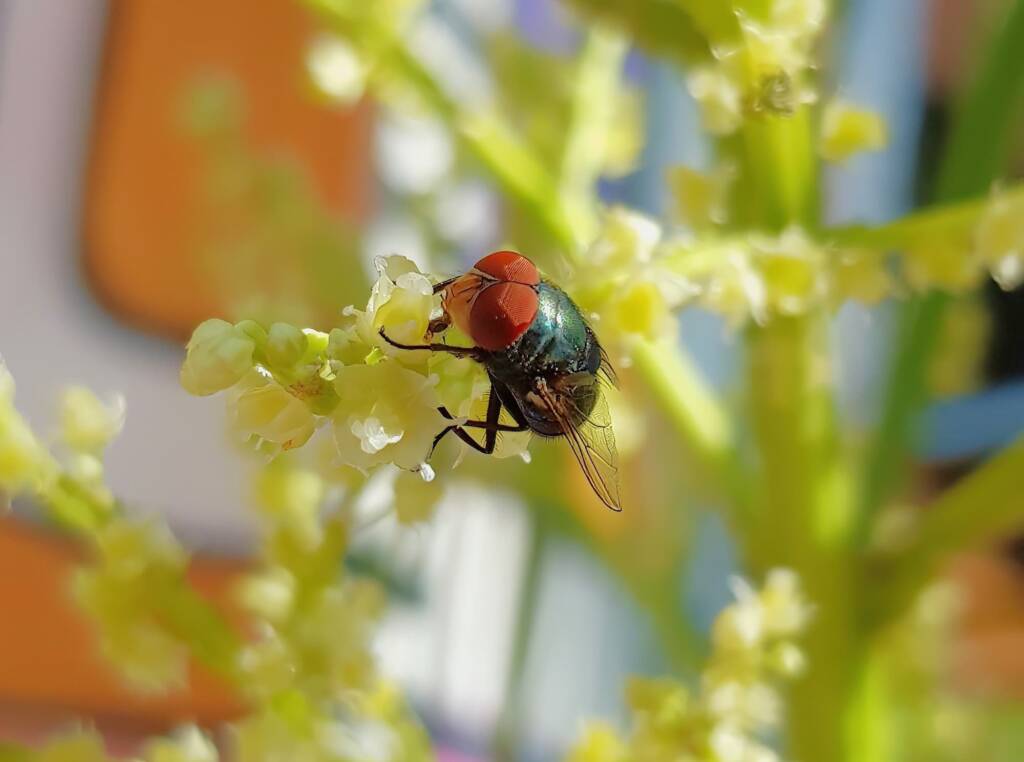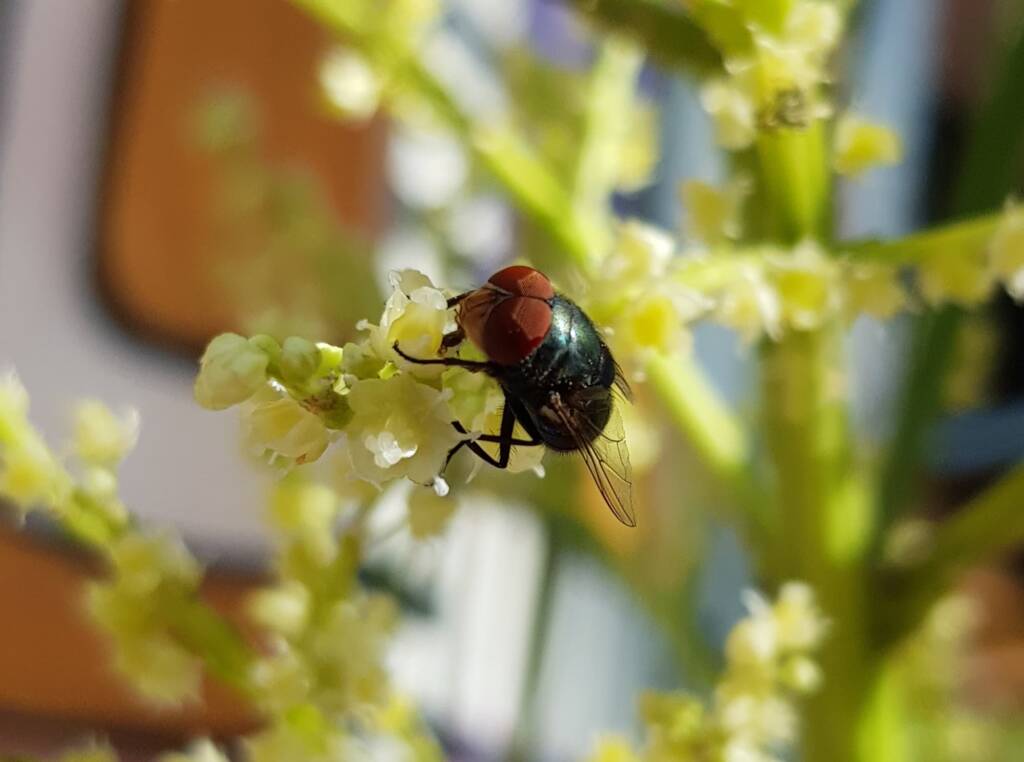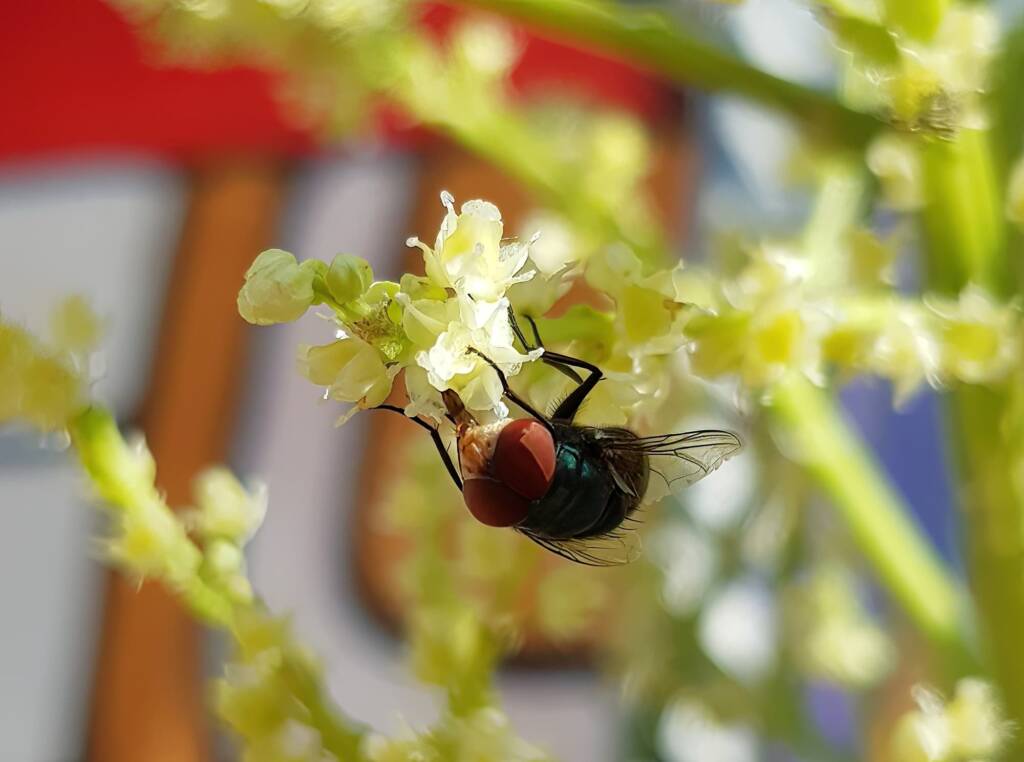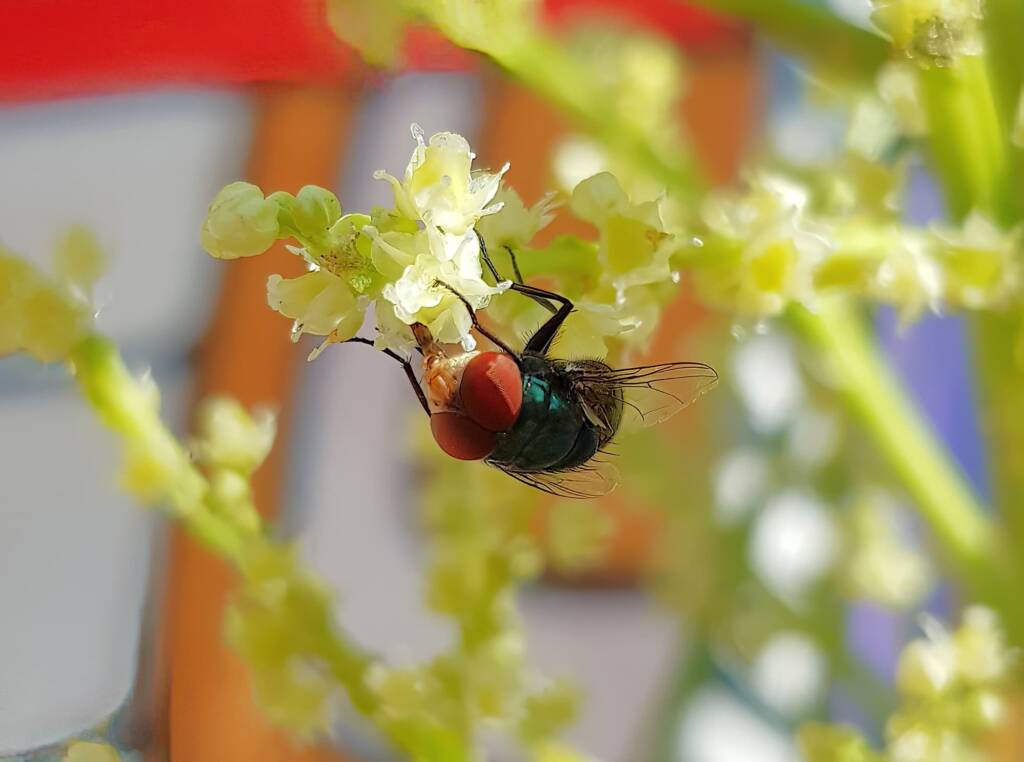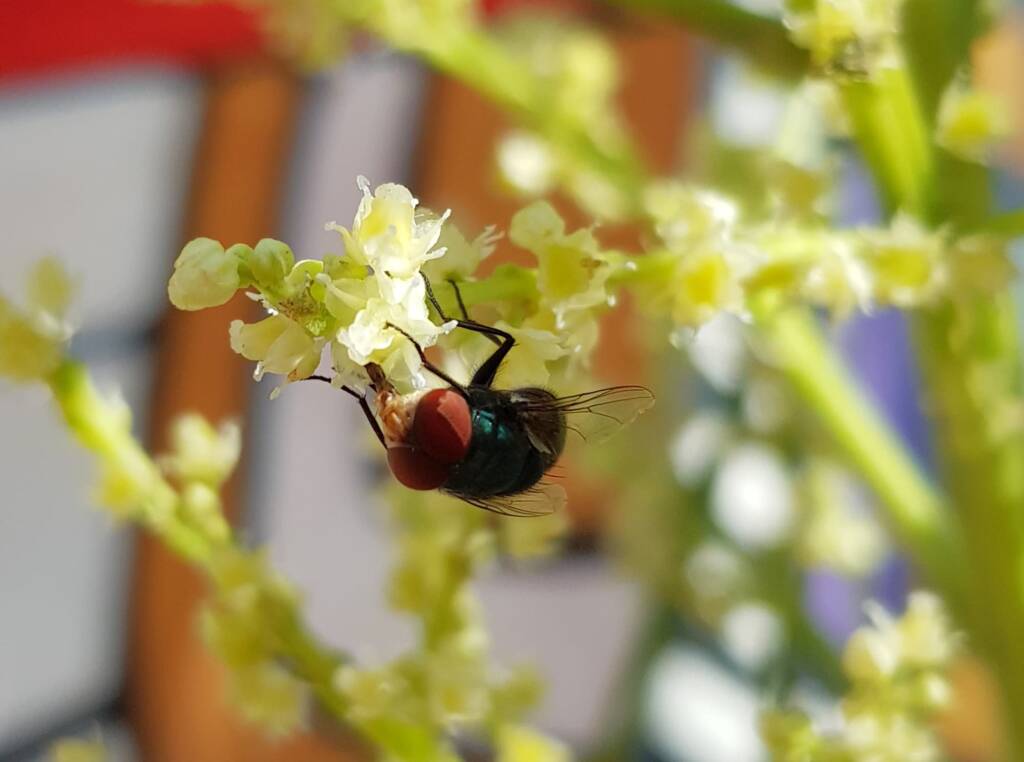DipteraDiptera – image index Flies Pollinators and Flies Australian Sheep Blowfly (Lucilia cuprina) Australian Drain Fly Balaana Beefly Bat Flies Bee Flies Bee Fly (Anthrax) Ligyra Australiphthiria Chrysomya saffranea Eristalinus punctulatus Musca Odontomyia (Soldier Flies) Robber Flies Sarcophaga aurifrons Soldier Fly Syrphids
The general public most probably would not associate flies as flower pollinators, yet many species of flies are, being attracted by both nectar and pollen. Unlike native bees, flies are not known to visit specific plant species, instead they are known to visit a variety of flowers.
Fly visitors from at least 71 families of Diptera have been recorded in the literature to flowers in 137 plant families (Larson et al., 2001). The families Syrphidae (hoverflies), Bombyliidae (bee flies), and the Muscidae are especially common as flower visitors.1
Pollinators, Role of, Authors D.W. Inouye, J.E. Ogilvie, in Reference Module in Life Sciences, 2017, Muscidae, ScienceDirect
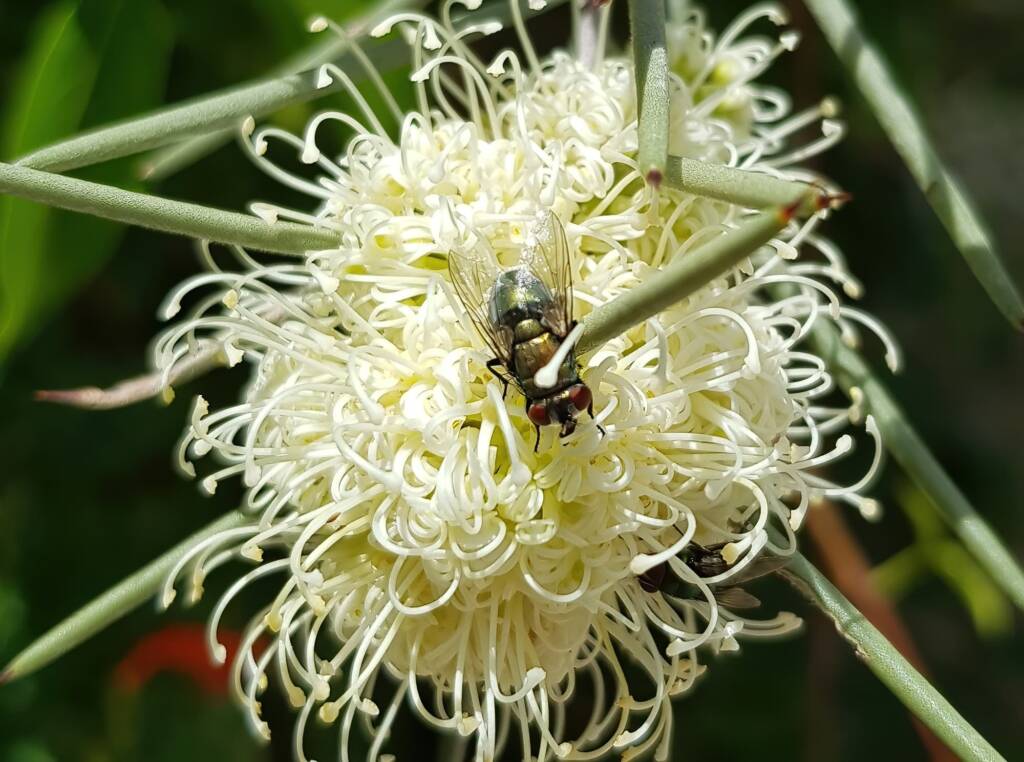

— click image to view full screen
Just like native bees, flies that feed on nectar are also known to “bubble” the nectar. This “bubbling” is the term for the process of the expulsion of nectar to evaporate the moisture from the nectar, to condense it.
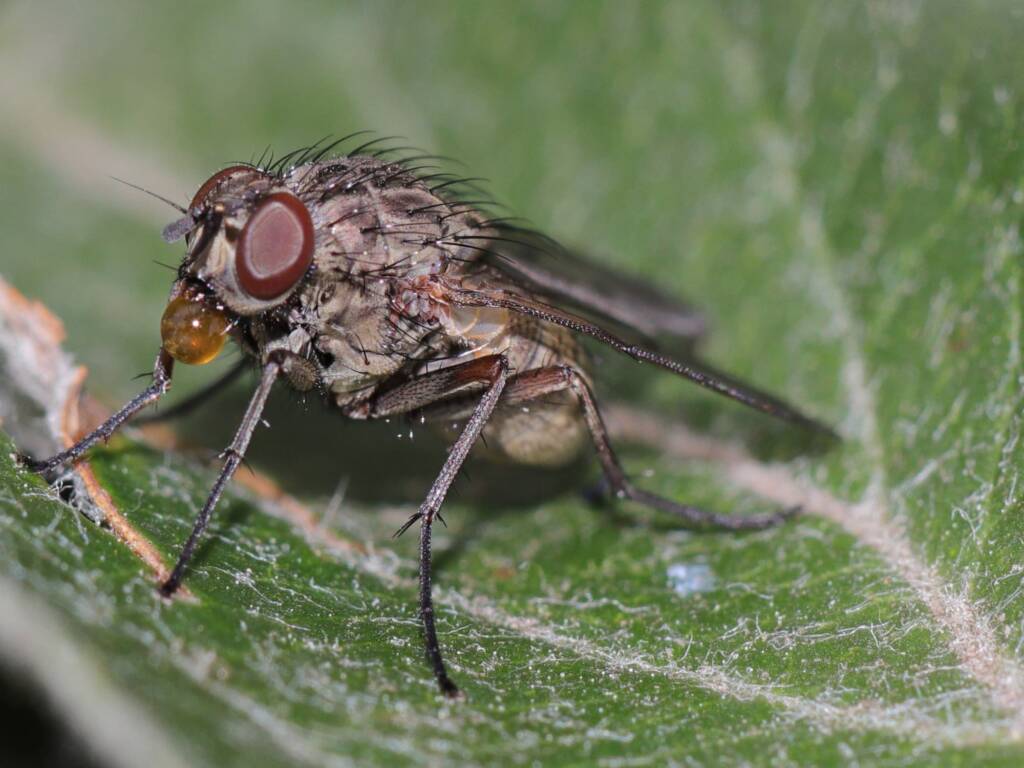
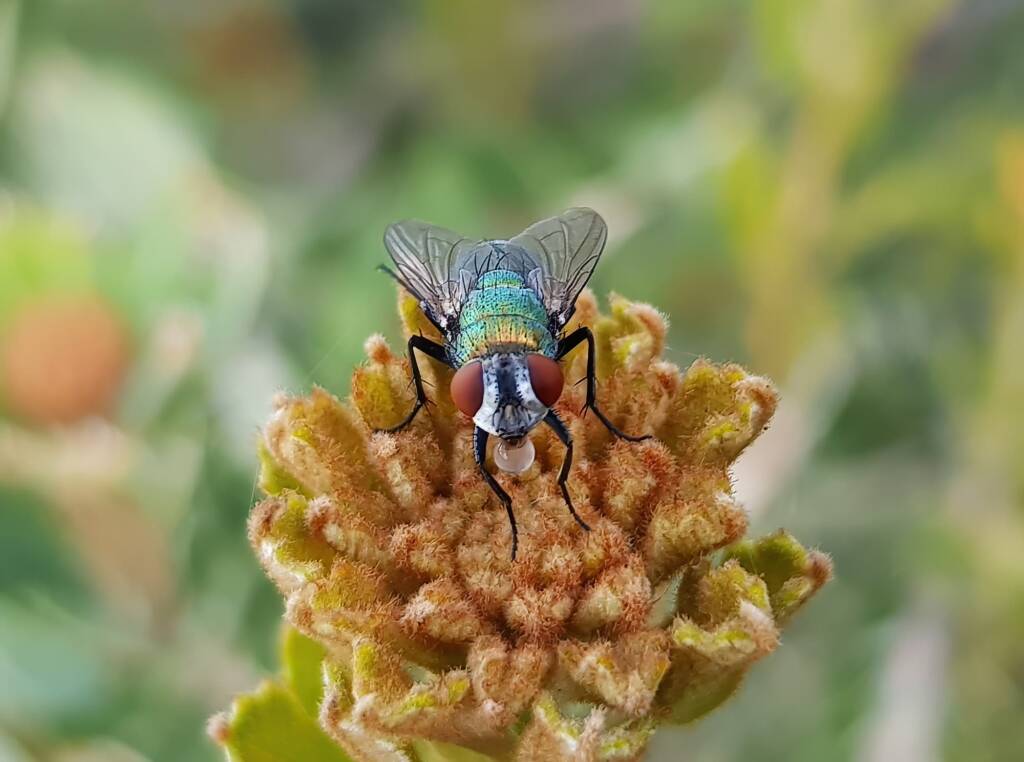
Footnote & References
- Pollinators, Role of, Authors D.W. Inouye, J.E. Ogilvie, in Reference Module in Life Sciences, 2017; Muscidae, ScienceDirect, https://www.sciencedirect.com/topics/biochemistry-genetics-and-molecular-biology/muscidae
- Fly, https://en.wikipedia.org/wiki/Fly (last visited Feb. 12, 2022)
- Diptera, Linnaeus, 1758, Flies, Atlas of Living Australia, https://bie.ala.org.au/species/urn%3Alsid%3Abiodiversity.org.au%3Aafd.taxon%3A6bb27cbe-1bc6-4a7b-b348-e3b5677f239f
- Flies, CSIRO, https://www.csiro.au/en/research/animals/insects/flies-research
- Phaonia tuguriorum, iNaturalistAU, https://inaturalist.ala.org.au/taxa/445506-Phaonia-tuguriorum
- Phaonia tuguriorum, Shane Lear, ausemade, iNaturalistAU, https://inaturalist.ala.org.au/observations/191843209
DipteraDiptera – image index Flies Pollinators and Flies Australian Sheep Blowfly (Lucilia cuprina) Australian Drain Fly Balaana Beefly Bat Flies Bee Flies Bee Fly (Anthrax) Ligyra Australiphthiria Chrysomya saffranea Eristalinus punctulatus Musca Odontomyia (Soldier Flies) Robber Flies Sarcophaga aurifrons Soldier Fly Syrphids
InsectsBees Beetles Blattodea Butterflies Coleoptera Cicada Crabronidae Diptera Dragonflies & Damselflies Formicidae Hemiptera Heteroptera (True Bugs) Mango Planthopper Moths Orthoptera Orthopteroid Processionary Caterpillar Stink Bugs, Shield Bugs and Allies Syrphidae Wasps Water Scorpion (Laccotrephes tristis) Witchetty Grub

